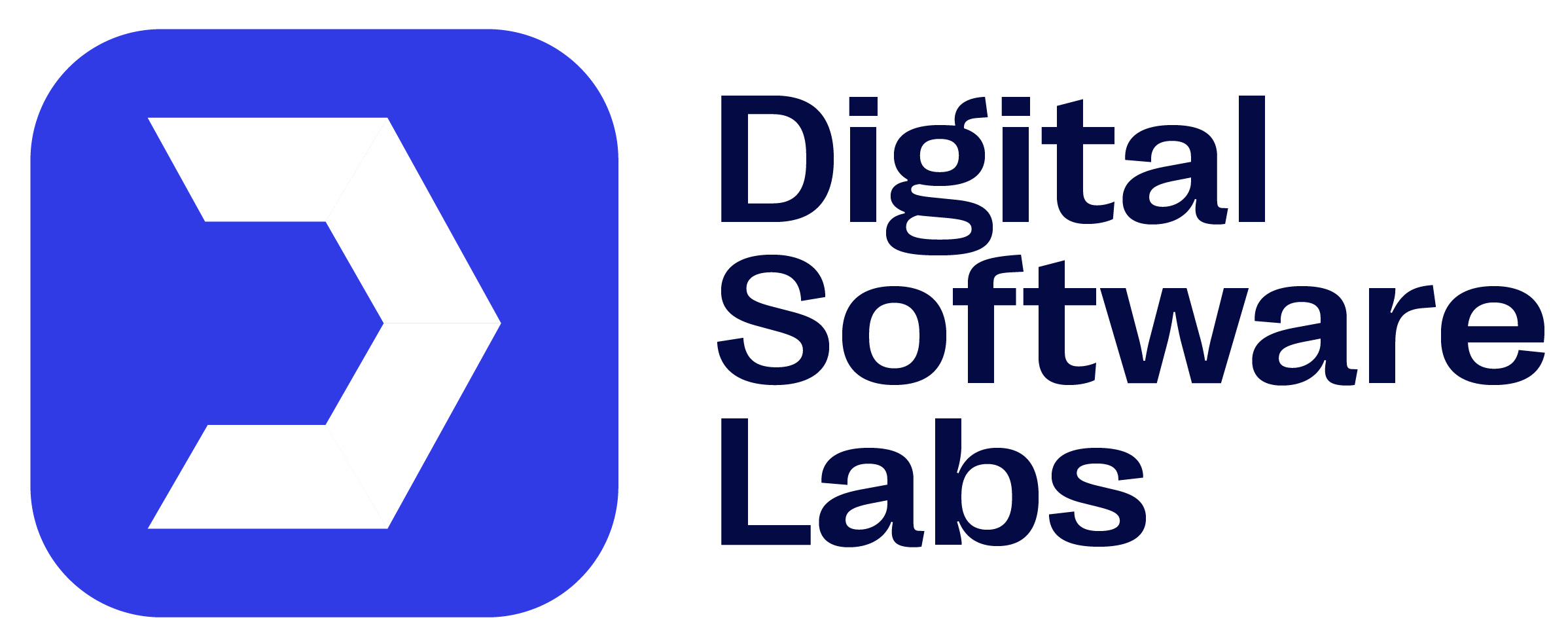Selecting the best frontend framework is essential for building responsive, efficient, and scalable web applications. A web frontend framework serves as a structural foundation that enhances user experience optimizes performance, and ensures seamless interaction across devices. With numerous options available, businesses and developers seek the best frameworks for frontend to meet their project requirements.
The demand for frontend framework solutions has grown as companies strive to create dynamic and engaging digital platforms. Speed, flexibility, and compatibility are important in determining the best frontend framework in 2025 that aligns with modern development standards. Whether React, Angular, or Vue.js, each framework offers unique benefits catering to various application needs.
From single-page applications (SPA) to complex enterprise solutions, the fastest frontend framework ensures optimal functionality without compromising performance. Developers need to evaluate key aspects, including ease of use, scalability, and security, before choosing the best frontend frameworks for their projects.
What’s considered as the best Frontend Framework?

Frontend frameworks are essential tools in web and mobile application development, providing developers with pre-built structures to create interactive, user-friendly interfaces. These frameworks help streamline the development process, ensuring consistency, responsiveness, and efficiency in application design. Modern frontend frameworks enable businesses to deliver seamless user experiences by offering optimized performance and cross-platform compatibility.
Similar to how on-demand applications improve user engagement in various industries, frontend frameworks enhance the usability of digital platforms. In sectors like food delivery, businesses use robust frontend technologies to create smooth, fast-loading applications that enhance customer interactions. Food delivery apps rely on frontend frameworks to integrate real-time order tracking, personalized recommendations, and seamless navigation, improving the overall user experience.
For businesses investing in web and mobile application development, choosing the right frontend framework is crucial for delivering scalable, visually appealing, and high-performance applications.
Focus Areas When Choosing a High-Performing Frontend Framework?
Selecting the best frontend frameworks is crucial for developing scalable, high-performance, and user-friendly web applications. The right frontend framework enhances speed, accessibility, security, and mobile optimization, ensuring that applications meet modern usability standards. Businesses and developers rely on the fastest frontend framework to optimize user engagement, navigation, and seamless responsiveness across devices.
Scalability
A web frontend framework should support scalability to accommodate growing user demands. Scalable frameworks allow businesses to expand features, integrate APIs, and manage traffic surges without performance degradation. The choice of backend development services plays a key role in ensuring that the frontend works smoothly with dynamic databases and cloud-based infrastructure.
Performance
The best frontend frameworks focus on fast-loading speeds and minimal resource consumption, improving user experience. The fastest frontend framework ensures quick rendering and seamless interactions, preventing delays that could impact user retention. Developers must choose frameworks that optimize load times and responsiveness for a competitive edge.
Accessibility
User-friendly applications require frontend frameworks that prioritize accessibility by adhering to global web standards. Ensuring compatibility with screen readers, color-contrast adjustments, and keyboard navigation enhances inclusivity, making applications accessible to all users.
Security
With cyber threats increasing, security remains a critical factor when choosing the best frontend framework for 2025. Secure frameworks provide built-in protection against XSS (Cross-Site Scripting), CSRF (Cross-Site Request Forgery), and SQL injection attacks, ensuring robust application security.
Mobile-First
A mobile-first approach in frontend framework selection ensures optimal performance on smartphones and tablets. With mobile usage surpassing desktops, frameworks must provide responsive designs, lightweight structures, and cross-platform compatibility for an enhanced mobile experience. The cost of implementing mobile-optimized frameworks is a factor, and understanding app development costs helps businesses plan for an efficient development strategy.
Clean UI, Great UX
A well-structured frontend framework enables developers to build visually appealing and intuitive user interfaces (UI). A seamless user experience (UX) ensures easy navigation, clear layouts, and interactive elements, improving engagement and user satisfaction.
Code Efficiency
The best frameworks for frontend development support clean, reusable, and maintainable code structures, reducing development time. Frameworks like React, Angular, and Vue.js provide component-based architectures, making application updates and maintenance easier. Is React the best frontend framework? Many developers prefer it due to its virtual DOM, reusability, and ecosystem support, making it a strong choice for scalable applications.
Increase Engagement
Using an optimized frontend framework directly impacts user engagement, as fast performance, smooth interactions, and visually appealing designs encourage users to stay longer. Businesses investing in high-performance frontend solutions improve conversion rates and customer retention, ensuring long-term growth and scalability.
Ready to Choose the Right Frontend Framework?
Optimize your web applications with the best frontend frameworks that enhance performance, scalability, and user experience. Get expert guidance to make the right choice for your project.
What Are the Best Frameworks for Frontend?

Choosing the best frontend framework is crucial for developing efficient, scalable, and high-performing web applications. Whether it’s React, Angular, Vue.js, or newer frameworks like Svelte and Preact, each frontend framework has strengths that cater to different project requirements. Developers often evaluate frameworks based on performance, scalability, and community support to determine the most suitable option. Is React the best frontend framework? Many developers favor it due to its component-based architecture, but alternatives like Angular and Vue.js also provide powerful capabilities. The choice of best frontend frameworks in 2025 depends on factors like project size, ease of use, and compatibility with backend technologies.
1. React
| When to Use React | When Not to Use React |
|---|---|
| React is widely recognized as one of the best frontend frameworks for dynamic user interfaces and high-performance web applications. | While React is a powerful frontend framework, it might not be the best option for simple static websites. |
| It is particularly useful for large-scale projects requiring reusable components and state management. | It has a steep learning curve, and developers unfamiliar with JavaScript and JSX may find it challenging. |
| Due to its virtual DOM, React ensures fast rendering and efficiency, making it one of the fastest frontend frameworks available. |
2. Angular
| When to Use Angular | When Not to Use Angular |
|---|---|
| Angular is one of the best frameworks for frontend when developing enterprise-level applications. | Angular is not the fastest frontend framework, and it requires more learning time than other frameworks like Vue.js or React. |
| It is highly structured and comes with built-in features like two-way data binding and dependency injection, making it a great choice for complex applications requiring robust architecture. | Smaller teams or projects that require flexibility and quick development may find it overwhelming. |
3. Vue.js
| When to Use Vue.js | When Not to Use Vue.js |
|---|---|
| Vue.js is a lightweight yet powerful frontend framework known for its simplicity and ease of integration. | Vue.js lacks the enterprise-level structure that Angular offers and may not be the best choice for large-scale applications requiring a well-defined architecture. |
| It is often used for small to medium-sized applications that require a reactive user interface and two-way data binding. |
4. jQuery
| When to Use jQuery | When Not to Use jQuery |
|---|---|
| jQuery remains a reliable frontend framework for quick, simple tasks like DOM manipulation and event handling. | For modern, complex web frontend frameworks, jQuery is not the best option as it lacks modular architecture and high-performance features. |
| It is useful for legacy applications and basic website functionality. |
5. Ember.js
| When to Use Ember.js | When Not to Use Ember.js |
|---|---|
| Ember.js is suitable for large-scale web applications that require a strong convention-over-configuration approach. | For developers who prefer flexibility and a lower learning curve, Ember.js may not be the most user-friendly frontend framework. |
| It simplifies development with pre-configured best practices, making it one of the best frontend frameworks 2025 for enterprise projects. |
6. Backbone.js
| When to Use Backbone.js | When Not to Use Backbone.js |
|---|---|
| Backbone.js is ideal for single-page applications (SPAs) that require a minimalistic framework with strong flexibility. | For modern, large-scale applications, Backbone.js lacks built-in advanced UI components and may require additional integrations. |
| It provides developers with greater control over project structure. |
7. Semantic-UI
| When to Use Semantic-UI | When Not to Use Semantic-UI |
|---|---|
| Semantic-UI is useful for developers who prioritize intuitive design and need pre-styled UI components for responsive web applications. | It may not be the best choice for projects requiring extensive customization or lightweight performance. |
8. Foundation
| When to Use Foundation | When Not to Use Foundation |
|---|---|
| The foundation is a mobile-first frontend framework with responsive grid systems, making it ideal for applications that require adaptive designs. | For small projects with minimal design needs, Foundation may be unnecessary due to its complexity and features. |
9. Svelte
| When to Use Svelte | When Not to Use Svelte |
|---|---|
| Svelte is an innovative frontend framework that eliminates the need for a virtual DOM, ensuring fast application performance. | Svelte is still growing in community support, and developers who require broad library integrations may find it limiting. |
| It is ideal for developers seeking a lightweight, high-speed alternative. |
10. Preact
| When to Use Preact | When Not to Use Preact |
|---|---|
| Preact is a lightweight alternative to React, perfect for small, fast-loading applications that prioritize performance efficiency. | For projects requiring React’s full ecosystem and complex state management, Preact might not be the best choice. |
Ready to Choose the Right Frontend Framework?
Optimize your web applications with the best frontend frameworks that enhance performance, scalability, and user experience. Get expert guidance to make the right choice for your project.
What are the key features of high-performing frontend frameworks?
Choosing the best frontend framework for development requires careful consideration of several key factors, including performance, scalability, flexibility, and ease of integration. The best frontend frameworks allow developers to build efficient, high-performance web applications with responsive and interactive designs. As technology advances, businesses must select a web frontend framework that balances speed, customization, and ease of use to remain competitive.
Features
An excellent frontend framework should include component-based architecture, optimized rendering, virtual DOM implementation, and state management. These features enhance the speed and scalability of applications, ensuring seamless interaction between users and web interfaces. Modern frontend frameworks also come with built-in security features, progressive web app (PWA) support, and cross-platform compatibility, allowing developers to build future-ready applications.
Community
A large, active developer community-supported framework ensures continued updates, extensive documentation, and community-driven innovations. Frameworks like React, Angular, and Vue.js benefit from open-source contributions, plugin development, and troubleshooting support, which makes it easier for developers to resolve issues. A well-supported framework frontend evolves quickly with emerging technologies, ensuring long-term viability.
Learning Curve
The best frontend frameworks should offer a learning experience that accommodates beginners and experienced developers. Is React the best frontend framework? Many developers prefer it due to its straightforward syntax, well-structured documentation, and ecosystem support, making it accessible for new learners. While some frameworks, such as Angular, require a steeper learning curve, they offer powerful enterprise-level solutions for complex web applications.
Compatibility
A modern frontend framework should seamlessly integrate with various backend technologies, third-party APIs, and cloud services. Cross-platform compatibility ensures that applications run smoothly on desktops, tablets, and mobile devices without compromising performance. Businesses focusing on mobile development choose frameworks that support mobile-first design, adaptive layouts, and responsive UI components for better accessibility.
Performance
Performance is a defining factor in selecting the fastest frontend framework. A well-optimized frontend framework ensures quick load times, efficient rendering, and reduced latency, contributing to a smooth user experience. Advanced performance-enhancing features, such as lazy loading, server-side rendering (SSR), and static site generation, enable frontend frameworks to maintain optimal speed even with large-scale applications.
Flexibility
An excellent frontend framework should provide high levels of customization to meet unique project requirements. Businesses need frameworks for developed UI designs, dynamic styling, and modular component structures. Customization options ensure developers can create branded and differentiated digital experiences while maintaining performance and security.
Easy Of Use
A frontend framework should be developer-friendly, enabling fast iteration and easy debugging. The best frameworks for frontend development provide well-organized project structures, transparent error reporting, and seamless integrations with build tools. A straightforward development process reduces the time required to launch new features and enhances productivity.
Customization
Not all applications have the exact requirements, so frontend frameworks must support various development environments. For e-commerce, SaaS platforms, enterprise software, or social media applications, businesses need frameworks tailored to specific industries while maintaining scalability and efficiency.
Popularity
The popularity of a frontend framework is often a good indicator of its long-term stability and potential for continued growth. The best frontend frameworks, such as React, Angular, and Vue.js, have proven reliable for building large-scale applications. Staying ahead with the best frontend framework 2025 ensures compatibility with emerging trends such as AI-driven interfaces, headless CMS, and progressive web apps (PWAs).
FAQs:
Spring Boot, React, and Angular are great options. React is flexible and works well with Spring Boot, making it an excellent choice when deciding which frontend framework to use with Spring Boot for dynamic and scalable applications. Conversely, Angular provides a complete solution with sophisticated capabilities ideal for enterprise-level projects.
The best frontend frameworks for large-scale applications include React, Angular, and Vue.js, known for their scalability, high performance, and modular architecture. These web frontend frameworks support efficient state management, component reusability, and seamless integration with backend services, making them ideal for enterprise-level applications. Businesses working on custom frontend solutions can explore the latest web and app development strategies to maximize their project’s success.
A frontend framework is a set of pre-written code, libraries, and tools that simplify the development of user interfaces in web applications. The best frontend frameworks offer structured architecture, responsive UI components, and efficient rendering, ensuring a seamless web experience for users. The choice of web frontend framework depends on the project’s requirements, scalability, and customization needs.
Using a frontend framework is beneficial when developing dynamic, interactive, and scalable web applications that require efficient UI management. Frameworks streamline development by offering pre-built components, optimized performance, and better maintainability. Whether for single-page applications (SPAs) or large-scale enterprise solutions, the best frameworks for frontend provide faster deployment and enhanced security.
The cost of frontend development varies based on the complexity, customization, and technology stack used. Selecting the best frontend framework can influence development time and cost efficiency. To optimize expenses, businesses seeking cost-effective solutions must consider factors like framework licensing, third-party integrations, and scalability.




